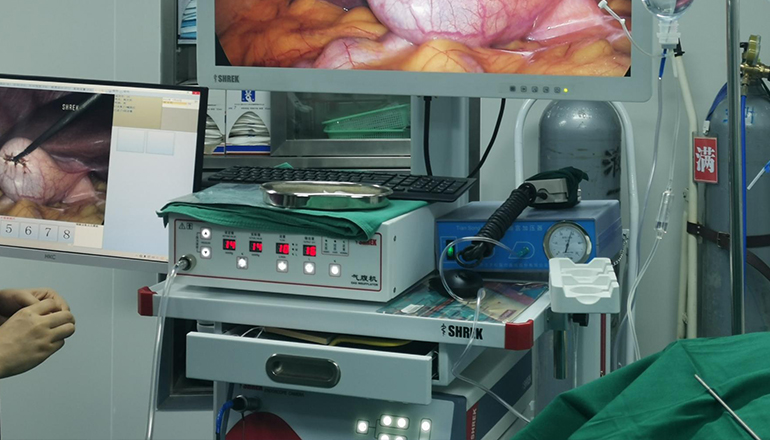- Shanghai, China
- [email protected]
- +86-21-58189111
Laparoscopic surgery is a minimally invasive surgical technique that involves making small incisions in the abdomen and inserting a laparoscope, which is a thin, flexible tube with a camera and light source, and other specialized surgical instruments. During a laparoscopic operation, the insufflator plays an important role in maintaining the appropriate environment for the surgery.
An insufflator is a device used to inflate the abdomen with carbon dioxide gas, creating a space for the surgeon to operate in. This process is known as insufflation, and it is critical to laparoscopic surgery. The insufflator is typically connected to the laparoscope and controlled by the surgeon or an assistant. Here are some of the important roles of the insufflator in laparoscopic surgery:
Create a clear operating field
The insufflator inflates the abdomen with carbon dioxide gas, which lifts the abdominal wall away from the underlying organs, creating a clear operating field. This allows the surgeon to see and access the internal organs without having to make a large incision.
Maintaining optimal pressure
The insufflator maintains the appropriate pressure inside the abdomen during the operation. The pressure is typically set between 12-15 mmHg, depending on the type of surgery being performed. This pressure helps to reduce bleeding and minimize trauma to the organs during the operation.

Regulating the flow of gas
The insufflator regulates the flow of gas into the abdomen during the operation. The flow rate is usually set between 1-2 liters per minute, depending on the size of the patient and the type of surgery being performed. This ensures that the pressure inside the abdomen remains stable throughout the operation.
Monitoring the gas supply
The insufflator monitors the supply of carbon dioxide gas during the operation and alerts the surgical team when the supply is running low. This ensures that there is always an adequate supply of gas to maintain the pressure and flow rate required for the surgery.
Safety features
The insufflator has several safety features, including a pressure relief valve and an alarm system that alerts the surgical team if the pressure inside the abdomen exceeds the set limit. These safety features help to prevent complications such as gas embolism, which can be life-threatening.
In conclusion, the insufflator plays a critical role in laparoscopic surgery by creating a clear operating field, maintaining the appropriate pressure and flow rate inside the abdomen, regulating the flow of gas, monitoring the gas supply, and providing safety features. Without the insufflator, laparoscopic surgery would not be possible, as it would be difficult for the surgeon to see and access the internal organs and maintain a stable operating environment.
Overall, the insufflator is an essential piece of equipment in laparoscopic surgery that helps to make the surgery safer and more effective. It allows surgeons to perform complex procedures with minimal incisions, leading to faster recovery times, less pain, and fewer complications compared to traditional open surgery. With the use of insufflator, laparoscopic surgery has become the preferred method of surgery for many conditions, including gallbladder disease, appendicitis, and hernia repair. As with any surgical procedure, it is important to have a skilled surgical team with the proper training and experience to ensure the best possible outcome for the patient.
Leave a Comments